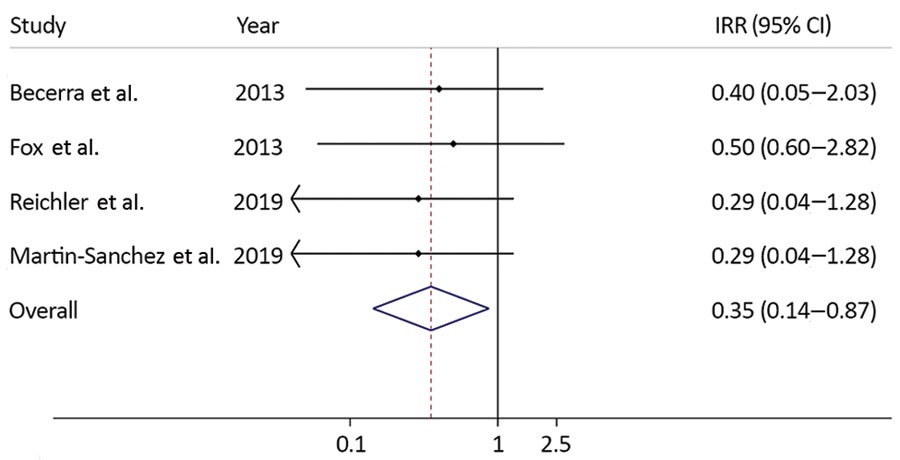Volume 27, Number 3—March 2021
CME ACTIVITY - Research
Effectiveness of Preventive Therapy for Persons Exposed at Home to Drug-Resistant Tuberculosis, Karachi, Pakistan
Figure 1

Figure 1. Incidence rate ratios for effectiveness of preventive therapy using data from published studies and a summary measure in study of preventive therapy for persons exposed at home to drug-resistant tuberculosis, Karachi, Pakistan, February 2016–March 2017. Solid line on y axis indicates null. Dotted line indicates pooled estimate of preventive therapy effectiveness. Blue diamond indicates 95% CI. Small diamonds indicate point estimates of preventive therapy effectiveness using data from each study with its CI. IRR, incident rate ratio.
1These authors contributed equally to this article.
Page created: January 11, 2021
Page updated: February 19, 2021
Page reviewed: February 19, 2021
The conclusions, findings, and opinions expressed by authors contributing to this journal do not necessarily reflect the official position of the U.S. Department of Health and Human Services, the Public Health Service, the Centers for Disease Control and Prevention, or the authors' affiliated institutions. Use of trade names is for identification only and does not imply endorsement by any of the groups named above.